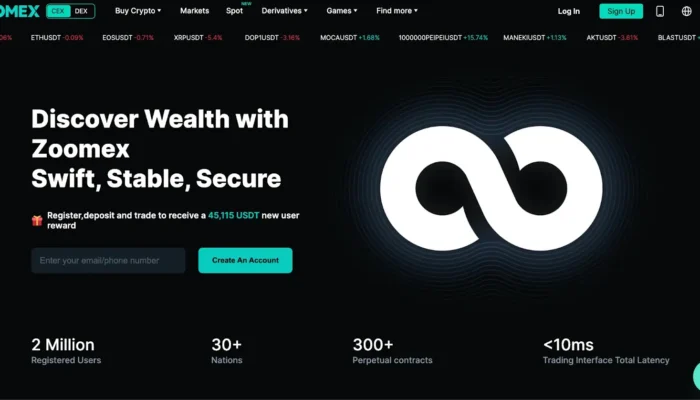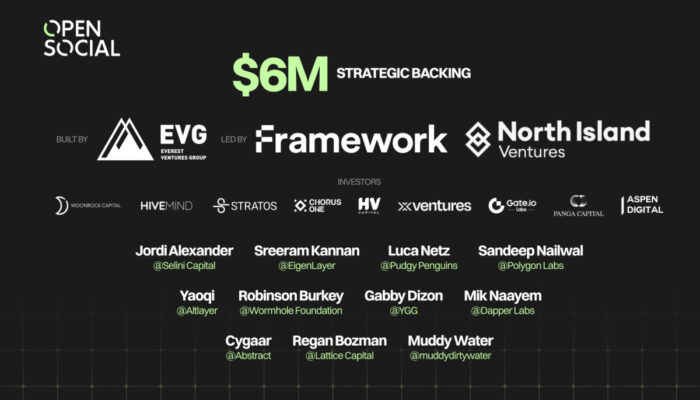It’s been a wild December for Polkadot. The Web 3.0 platform has announced its first 5 parachain auction winners, Acala, Moonbeam, Astar, Parallel Finance and Clover Finance, and finally launched the winning projects on Polkadot on December 18th.
Polkadot has been widely touted by some of the smartest minds in crypto for quite some time now as the eventual “Ethereum Killer”, thanks to its incredible and ambitious interoperable technology, Web 3.0 design and the leadership of genius Ethereum co-founder Gavin Wood. A surge in interest recently on the back of Polkadot finally announcing its parachain auctions for the first of 100 slots on the Web 3 ecosystem, as well as systemic scaling issues over at Ethereum such as network congestion and high gas fees, has seen the price of native asset DOT climb to over $50, before it dropped down to under $30 due to bearish market conditions.
First 5 Polkadot Slot Auction Winners Announced
As of early December, the first 5 slot auction winners have been announced, and there were few surprises, considering how the Kusama auctions played out earlier this year. They are:
1) Acala Network wins 1st auction

On 18 November 2021, Polkadot announced Acala Network as the winner of its first parachain slot auction. Acala is a decentralized finance (DeFi) protocol , which will operate on the Polkadot network.
-----Cryptonews AD----->>>Sign up for a Bybit account and claim exclusive rewards from the Bybit referral program! Plus, claim up to 6,045 USDT bonus at . https://www.bybit.com/invite?ref=PAR8BE
<<<-----Cryptonews AD-----
Acala raised approximately 32.5 million DOT tokens, equivalent to just under $1billion, from 24,934 investors, via an initial coin offering (ICO), structured as a crowdloan.
2) Moonbeam set for moonshot after winning 2nd slot

The second auction was concluded on the 25th of November 2021, with Moonbeam selected for the second auction slot.
Moonbeam is an Ethereum-compatible smart contract platform, designed for building interoperable applications.
Impressively, Moonbeam ultimately received the largest total contribution, from a global total of 200k contributors; stumping up a total of 35 million in DOT tokens, worth an astonishing $996 million. Much of it might have had to do with the lucrative rewards offered by its Kusama equivalent Moonriver, which netted stakers a cool $9600 in rewards for every KSM (around $400 at the time) contributed.
3) Astar shoots for the stars with 3rd auction claim

On 3 December, Astar Network, formerly known as Shiden, which is a layer-two decentralized app hub that enables the transfer of data between adjacent network nodes, was named as the third winner of Polkadot’s third parachain slot auction.
Astar amassed contributions of over 10.3 million DOTs from 27,100 contributions, worth in the region of $292 million.
4) Parallel Finance takes down 4th parachain auction

Parallel Finance won the 4th parachain in early December, and will have its lease until 20 October, 2023. Community DOT contributors should earn roughly 25 $PARA tokens per each DOT staked.
Parallel Finance launched in April 2021 as an “institutional-grade” DeFi lending protocol and received backing by blue-chip crypto VCs such as Sam Bankman Fried’s Alameda Research, Sequoia, and Lightspeed Venture Partners. The project aims to provide Polkadot-specific unique lending solutions tailored to Polkadot while maintaining user safety.
5) Clover Finance’s luck holds, gets 5th parachain

Last but not least, Clover Finance is an EVM-compatible smart contract platform founded in 2020 that seeks to provide a foundation layer for cross-chain compatibility. It can be seen as an infrastructure platform that will allow developers to link DeFi dApps between Ethereum and Polkadot.
Recap: What is Polkadot and how do parachains work?
In brief, Polkadot was launched in May 2020 and is widely regarded as a fully decentralized platform that is designed to allow a multitude of blockchains to transfer messages — including monetary— in such a way that is secure and trustless.
In fact, Polkadot was designed to be totally open-source, allowing for other blockchains to be assembled on top of its Relay chain (see below), to facilitate smart contract functionality; these are most commonly known “parachains”.
As a result, users will be able to execute inter-chain transactions, within the Polkadot ecosystem, without any requirement for third-party intervention. In effect, allowing for the creation of a universal internet of blockchains.
The Relay Chain
The relay chain is the ‘power grid’ of the Polkadot protocol and is responsible for the network’s core attributes: consensus, cross-chain interoperability and security.
The Relay Chain is the key blockchain within the network; essentially the ‘main street’ of Polkadot’s ecosystem, where value is transmitted and blocks are completed.
What are Polkadot Slot Auctions?
To qualify to operate a parachain on Polkadot, projects are required to lease a slot on the Relay Chain via a ‘slot auction’. This requires candidate projects to accumulate and raise crowdsource funding in DOT from its community in return for lucrative staking rewards. However, there is one small proviso: if a project is successful at winning a parachain, the staked DOT is locked for up to 96 weeks before it’s returned to its contributors.
Slot auctions are being held to allow projects to bid for and be selected to run parachains, on the Polkadot network. The number of parachains that can be supported on the main Relay chain has been capped at 100.
The initial batch of five Polkadot parachains will be auctioned off by mid-December 2021, with all of the projects going live on the 17th of December.
Bidding Process
Between 50–100 parachain slots have been available for bidding on (supporting) in the first auction. In addition, the maximum ‘shelf-life’ of a parachain slot is 2 years, comprising four lease cycles of 6 months. This process allows for bidders to bid for the lease periods, of their choice.
Looking Ahead: Polkadot in 2022
The first batch of parachain auctions has delivered some strong winners that will all add tremendous value to Polkadot’s ecosystem. It’s clear that developers have relished the opportunity to leverage Polkadot’s interconnected habitat, to create both reach and awareness of their assorted projects.
What is of particular interest to developers is the vibrancy of Polkadot’s ecosystem, especially when you consider it currently has over 400 projects building on Substrate, its foundational framework.
In addition, when you take into account important considerations such as interoperability, shared security, robust developer tools, on-chain governance, and crowdloan functionality, it is clear to many that Polkadot will only continue to receive more and more mainstream attention, as the decentralized vision of the future slowly becomes a reality. With more parachains to follow next year, 2022 will undoubtedly prove a pivotal year for Polkadot and its unique Web 3.0 vision.
Finally, in case you don’t already know, CoolWallet Pro not only supports Polkadot, but also offers you the ability to stake $DOT on our hardware wallet for some handy returns!

The post Polkadot’s First 5 Parachain Winners Pave Way for Bright 2022 appeared first on CoolWallet.
Polkadot’s First 5 Parachain Winners Pave Way for Bright 2022





